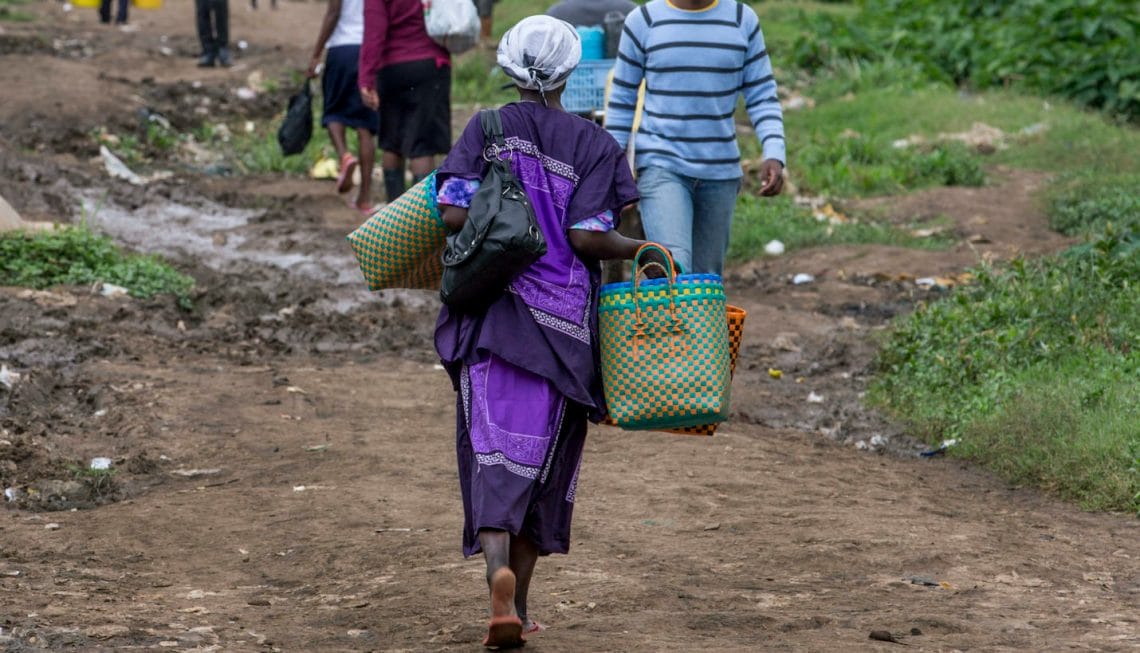Beyond the grim realities of a growing death toll, the COVID-19 pandemic has had negative effects on multiple dimensions of life for many people across the globe for much of 2020. Sadly, those already facing instability are disproportionately affected.
Social protection programs, including cash transfers, are crucial to safeguarding those living with extreme poverty, and keeping those who are only temporarily at risk during crises such as the COVID-19 pandemic out of long-term poverty. Before the onset of the pandemic, our livelihoods team had been working with numerous governments in sub-Saharan Africa to design and build evidence on behavioral designs that can be applied to enhance the impact of social protection cash transfers.
In March 2020, our team was in the process of generating more evidence on the effectiveness of behavioral design to encourage savings and enhance productive investments for recipients of Kenya’s National Safety Net Programme (NSNP), dubbed Inua Jamii. When movement restrictions were initiated, we were in the process of rolling out a large-scale cluster randomized controlled trial to test the effectiveness of the nudge designs. The work came to a sharp halt, of course, but we found an opportunity to pivot our research and still seek positive impact on livelihoods using a no-contact methodology. The COVID-19 environment presented an important question: Are behavioral interventions designed in the pre-COVID context effective during a chaotic time such as a global pandemic?
To answer this question, ideas42 worked with the Kenyan Ministry of Labor and Social Protection – Social Assistance Unit and carried out a phone study to explore the effectiveness of designs created pre-COVID during the pandemic. Interviews with 66 men and women aged 32-85 years old and enrolled in Inua Jamii were completed in June/July 2020. Our aim was to gain insight into the effects of COVID-19 on the day-to-day lives of cash transfer beneficiaries. We also sought to understand if and how those who had received our behavioral designs used them during the pandemic, and any differences between those who received them and those who did not.
Survey participants reported that even if they did not know anyone who had fallen sick due to the coronavirus, they have faced indirect impacts that negatively affected their livelihoods. The changes expressed by 79% of respondents fell into three buckets: increased food prices, decreased income due to movement restrictions, and social changes, such as not being able to meet with family or children not being in school, making it difficult to save or invest. Some participants told us “Income has decreased and it is hard to buy food and have any left over for savings,” while others reported that because children are home from school, they must buy more food throughout the day, and increased prices add to this additional burden.
We also found that despite the overall negative impacts of COVID-19, recipients who had received the enhanced behavioral features both remembered the tools (90%) and found them useful (85%) in navigating the pandemic.
They were also more likely to have concrete goals and were benefitting from their efforts to save toward those goals during the pandemic. Once the pandemic set in, they were better able to safeguard their livelihoods by relying on the savings and productive investments accrued beforehand. One beneficiary in Kisumu County reported, “I had a goal to buy 2 goats and they have reproduced and now they are 5 in number.” Another beneficiary from West Pokot County shared, “…because before the pandemic I used to save, and the money that I have been saving has helped me during this time.”
They also reported being able to adapt, even though they reduced their savings amounts to account for increased expenses. Though their goals were often delayed, recipients of behavioral enhancements were able to adjust and save a little (50% more than those who did not receive nudges). “My goal was to buy another sheep to keep. Corona has contributed a lot not attaining the goal at the right time, [but] by October I will be able to buy my sheep”.
They were more likely to report having agency or taking action to improve their livelihoods in the future. Recipients of the behavioral enhancements to cash transfers forecasted a positive change in six months, citing that they intended to make productive investments that would help them “My family’s wealth will change. My goal was to buy 2 goats. By the end of the year…we will be able to cater to our needs.”
Our findings from remote interviews at the height of COVID-19 reinforce earlier project findings from a pilot test that demonstrated positive effects for Inua Jamii beneficiaries in goal setting, plan-making, and follow-through with savings. This work in Kenya was also an opportunity to gather insights on how to safely conduct field studies remotely more broadly, with implications for future work for our team and others.
As the social protection landscape explores systems approaches to better address the most extreme forms of poverty around the globe at scale, behavioral science offers a wide array of context-driven tools to do so. While we continue our pre-COVID goal of generating more evidence on the effectiveness of behavioral design to encourage savings and enhance productive investments in cash transfers, as well as exploring beneficial changes to other social protection programs, future directions of this work include determining how behavioral design can be streamlined into government policy to allow for more scalability and efficient delivery.
For more information on mainstreaming the applications of behavioral science in government policy, stay tuned for our forthcoming policy brief in early 2021.



